Angel Eyes
Member
- Joined
- Oct 6, 2009
- Messages
- 61
- Reaction score
- 0
- Points
- 6
I think that before trying to explain the variations in Chinese medical practice, I ought to run through a summary of the basic theories first. I can see this being a long post .
Qi
Qi (or Chi) is the stuff of life. The early Taoists observed movement in the universe. They realised that nothing happens by itself and so pondered the origins, and from this devised the idea that Qi is the stuff that underlies all movement and function. It is that which holds the planets in the sky, it is that which can be felt when facing the sun. In human terms, it is that which provides the energy for metabolism and substance; nothing physical or emotional happens without qi involvement.
Qi exists in different forms simultanously. Using a candle as an example of the human body, qi is that which provides the physical form; the functional form can be thought of as the burning flame, and the heat can be felt as a different qi form. All expressions of qi in a different non-substantive state that could equate to the human "spirit" or unconcious.
Qi comes together at conception to form a new life, with qi inherited from the parents. The Taoists were looking for ways to "reunite" with the Tao or universe, and so developed ways of refining and transforming qi to a more "spiritual" form, called Shen. This Shen qi is the stuff of human spirituality, and resides in the body after being transformed from qi acquired from air and food. The organs all play a role in absorption, storage or transformation of qi, therefore sickness is represented as a disruption to the qi "mechanism". The Taoists realised that by circulating the qi through the body, it could be refined through physical and mental practices, hence the origins of Qi Gong and Tai Chi. There ultimate goal was to keep the body alive for long enough and healthily enough to fulfil their spiritual journey.
Through meditative practices, the ebb and flow of qi energy can be felt. This became the origin of the Channel theory; qi moves through all of the body structures, but there are areas of condensed flow, similar to the Gulf stream in the Atlantic. From there, they determined that distruption to the qi flow for some or other reason results in imbalance, the body no longer being in harmony either with itself or the wider universe. This flow can be "tapped" at access points, hence the acupuncture points known as "men" or gateway in Chinese.
The main list of events that can disrupt Qi flow is as follows-
Climactic factors, Wind, Cold, Damp and Heat, all of which may invade the body obstructing the channels
Inactivity; this creates stagnation in the movement of Qi as muscles and tendons tighten, they restrict Blood and Qi flow. This was especially relevent because of the many hours spent in meditation postures, and is still relevent due to modern lifestyles.
Emotions; Strong emotions, especially fear, anger, worry, frustration and so on were thought to "knot" Qi flow leading to internal inbalance. Qi once restricted may become "pressurised", creating internal disorders.
Diet; As we rely on diet to bring new Qi into the body, (along with air) a faulty diet can make qi difficult to absorb or transform. This especially includes cold foods, excessive amounts of rich foods, dairy foods and so on. Emotional factors were thought to affect digestion too.
Once the Qi flow is blocked, restoration of Qi flow is necessary to rebalance the body. This can be achieved in several ways-Expelling the pathogenic factors blocking the channelsCreating movement that encourages flow-this could be passive or active, hence tai chi or massage techniques.Resolve dietary faultsResolve emotional disturbanceBecause of the "cause and effect not different" view of the universe, emotional disharmony can be both the result of disturbed Qi flow, and/or the cause, hence someone often showing indications of severe worry may also exhibit digestive disorders, and vice versa. They are both part of the same pattern.
Disharmony may also result from, or cause, Qi deficiency. I like the analogy of a garden hose, with water in it, but turned off at the tap- not enough "pressure" in the system to move Qi. The water becomes stagnant if left long enough. Flow can also be disrupted by a foot on the pipe, even if there is enough pressure. From this comes the idea of Deficiency or Excess, which is one of the ways of begining to identify the main "flavour" of a pattern of disharmony. In practice several patterns may overlap, making diagnosis tricky. Stganation of qi means pain arising as a result of insufficient movement of Blood or Fluids.
In general, acupuncture is used (alongside other methods) to resolve Stagnation by stimulating Qi flow. It is also used to expel pathogens, often by causing sweating using strong techniques. It can also be used to "tonify" when Qi is deficient by stimulating the digestive and transformative functions. This is the basis for acupuncture as practiced in China today. However, there has been a hiatus in the development of CM during the late 19th and earlier 20th centuries, when there was an urge to "modernise". As I understand it, this never really happened to such a degree in places like Japan and Korea, and so different methods have evolves in these locations.
Variations have arisen as acupuncture came to the west. Five element acupuncture is a western variation on one particular methodological theory. This style is seldom practiced in China, being seen as outmoded. That's not to say it doesn't work, as many western practitioners will testify, it's just been superceeded by "new" ideas about "old" methods. The teaching of CM is supervised by the state, and there tends to be a defensiveness when it comes to other styles.
Another variation is Western Medical acupuncture. This attempts to explain the effects of acupuncture in biomedical terms, and is used primarily as an add-on technique by physios, GP's and osteopaths. There is usually derision for what is seen as outmoded theories of Qi, Yin/Yang etc. It worls well for musculoskeletal disorders, but usually is addressing "branch" symptoms rather than the "root" problem. It would not be used to say, tonify Deficient Qi as the language used doesn't allow it.
Other micro-systems have been devised, in which the idea that a small part of the body is a reflection of the rest. Auricular acupncture is one version, and often used in addiction clinics as it is quick, cheap and easy to learn. Being a western idea developed in France in the 1960's it tends to treat "symptoms" without looking at the person in their entirety. It can be helpful to get someone over the stress associated with addiction withdrawal, as a branch of the vagus nerve is stimulated which may slow heart and respiration rates experienced during anxiety. This is now being practiced by some CM practitioners. Other micro-systems exist, including Korean hand acupuncture.
There may be a name for this "school", but I'm not sure what it is. I studied TCM, which is the style of acupuncture taught in modern China, but this was after 15 years of studying Taoist principles and movement arts. The two are not usually linked in modern teaching, as the Chinese have mostly lost their connections with their early heritage, and stick to what is taught by the State. In the west we have had more open access to tai chi and qi gong than in China, so practitioners often develop simultaneous interests.
There, I'm all typed out. This is a very condensed version, of course, and like most things Chinese, open to other interpretations. I don't claim any expertise in this field!
Qi
Qi (or Chi) is the stuff of life. The early Taoists observed movement in the universe. They realised that nothing happens by itself and so pondered the origins, and from this devised the idea that Qi is the stuff that underlies all movement and function. It is that which holds the planets in the sky, it is that which can be felt when facing the sun. In human terms, it is that which provides the energy for metabolism and substance; nothing physical or emotional happens without qi involvement.
Qi exists in different forms simultanously. Using a candle as an example of the human body, qi is that which provides the physical form; the functional form can be thought of as the burning flame, and the heat can be felt as a different qi form. All expressions of qi in a different non-substantive state that could equate to the human "spirit" or unconcious.
Qi comes together at conception to form a new life, with qi inherited from the parents. The Taoists were looking for ways to "reunite" with the Tao or universe, and so developed ways of refining and transforming qi to a more "spiritual" form, called Shen. This Shen qi is the stuff of human spirituality, and resides in the body after being transformed from qi acquired from air and food. The organs all play a role in absorption, storage or transformation of qi, therefore sickness is represented as a disruption to the qi "mechanism". The Taoists realised that by circulating the qi through the body, it could be refined through physical and mental practices, hence the origins of Qi Gong and Tai Chi. There ultimate goal was to keep the body alive for long enough and healthily enough to fulfil their spiritual journey.
Through meditative practices, the ebb and flow of qi energy can be felt. This became the origin of the Channel theory; qi moves through all of the body structures, but there are areas of condensed flow, similar to the Gulf stream in the Atlantic. From there, they determined that distruption to the qi flow for some or other reason results in imbalance, the body no longer being in harmony either with itself or the wider universe. This flow can be "tapped" at access points, hence the acupuncture points known as "men" or gateway in Chinese.
The main list of events that can disrupt Qi flow is as follows-
Climactic factors, Wind, Cold, Damp and Heat, all of which may invade the body obstructing the channels
Inactivity; this creates stagnation in the movement of Qi as muscles and tendons tighten, they restrict Blood and Qi flow. This was especially relevent because of the many hours spent in meditation postures, and is still relevent due to modern lifestyles.
Emotions; Strong emotions, especially fear, anger, worry, frustration and so on were thought to "knot" Qi flow leading to internal inbalance. Qi once restricted may become "pressurised", creating internal disorders.
Diet; As we rely on diet to bring new Qi into the body, (along with air) a faulty diet can make qi difficult to absorb or transform. This especially includes cold foods, excessive amounts of rich foods, dairy foods and so on. Emotional factors were thought to affect digestion too.
Once the Qi flow is blocked, restoration of Qi flow is necessary to rebalance the body. This can be achieved in several ways-Expelling the pathogenic factors blocking the channelsCreating movement that encourages flow-this could be passive or active, hence tai chi or massage techniques.Resolve dietary faultsResolve emotional disturbanceBecause of the "cause and effect not different" view of the universe, emotional disharmony can be both the result of disturbed Qi flow, and/or the cause, hence someone often showing indications of severe worry may also exhibit digestive disorders, and vice versa. They are both part of the same pattern.
Disharmony may also result from, or cause, Qi deficiency. I like the analogy of a garden hose, with water in it, but turned off at the tap- not enough "pressure" in the system to move Qi. The water becomes stagnant if left long enough. Flow can also be disrupted by a foot on the pipe, even if there is enough pressure. From this comes the idea of Deficiency or Excess, which is one of the ways of begining to identify the main "flavour" of a pattern of disharmony. In practice several patterns may overlap, making diagnosis tricky. Stganation of qi means pain arising as a result of insufficient movement of Blood or Fluids.
In general, acupuncture is used (alongside other methods) to resolve Stagnation by stimulating Qi flow. It is also used to expel pathogens, often by causing sweating using strong techniques. It can also be used to "tonify" when Qi is deficient by stimulating the digestive and transformative functions. This is the basis for acupuncture as practiced in China today. However, there has been a hiatus in the development of CM during the late 19th and earlier 20th centuries, when there was an urge to "modernise". As I understand it, this never really happened to such a degree in places like Japan and Korea, and so different methods have evolves in these locations.
Variations have arisen as acupuncture came to the west. Five element acupuncture is a western variation on one particular methodological theory. This style is seldom practiced in China, being seen as outmoded. That's not to say it doesn't work, as many western practitioners will testify, it's just been superceeded by "new" ideas about "old" methods. The teaching of CM is supervised by the state, and there tends to be a defensiveness when it comes to other styles.
Another variation is Western Medical acupuncture. This attempts to explain the effects of acupuncture in biomedical terms, and is used primarily as an add-on technique by physios, GP's and osteopaths. There is usually derision for what is seen as outmoded theories of Qi, Yin/Yang etc. It worls well for musculoskeletal disorders, but usually is addressing "branch" symptoms rather than the "root" problem. It would not be used to say, tonify Deficient Qi as the language used doesn't allow it.
Other micro-systems have been devised, in which the idea that a small part of the body is a reflection of the rest. Auricular acupncture is one version, and often used in addiction clinics as it is quick, cheap and easy to learn. Being a western idea developed in France in the 1960's it tends to treat "symptoms" without looking at the person in their entirety. It can be helpful to get someone over the stress associated with addiction withdrawal, as a branch of the vagus nerve is stimulated which may slow heart and respiration rates experienced during anxiety. This is now being practiced by some CM practitioners. Other micro-systems exist, including Korean hand acupuncture.
There may be a name for this "school", but I'm not sure what it is. I studied TCM, which is the style of acupuncture taught in modern China, but this was after 15 years of studying Taoist principles and movement arts. The two are not usually linked in modern teaching, as the Chinese have mostly lost their connections with their early heritage, and stick to what is taught by the State. In the west we have had more open access to tai chi and qi gong than in China, so practitioners often develop simultaneous interests.
There, I'm all typed out. This is a very condensed version, of course, and like most things Chinese, open to other interpretations. I don't claim any expertise in this field!

























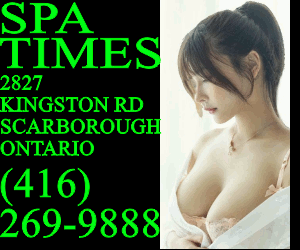

























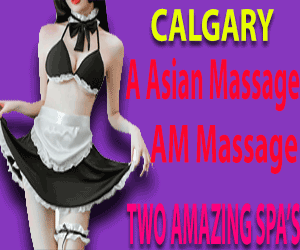












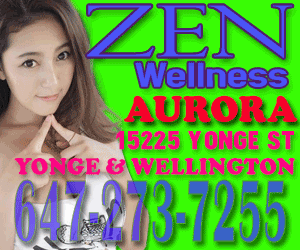
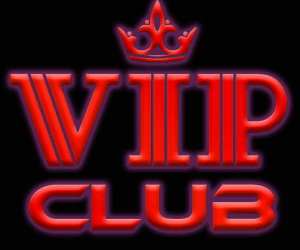


















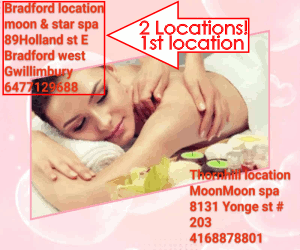





 )
)



